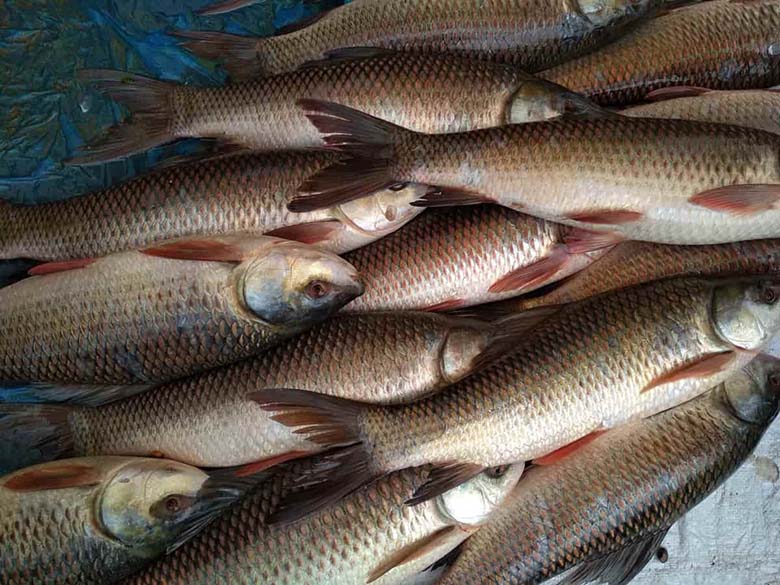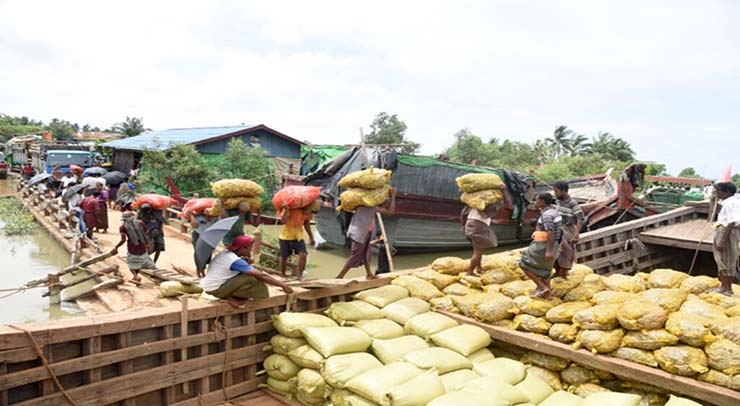
The trade between Myanmar and Bangladesh shows that Myanmar’s exports are doing better than its imports. Myanmar sells more than it buys from Bangladesh. In current 2022-2023 fiscal year from April 1 to December 2, Myanmar exported $19.066 million worth of goods while importing only $0.14 million worth of goods.
Bangladeshis rely heavily on Burmese seafood and products. Salmon, carp and shrimp are the most popular species exported from Burma ( previous name of Myanmar) to Bangladesh. These fish are initially transported to Teknaf before being transported to Chittagong Dhaka and other towns in Bangladesh. In addition, Bangladesh earns significant sums of money from the import of seafood through the Teknaf land port.
Since 2016, Myanmar has exported Rohu fish to Bangladesh through the border commercial crossings of Sittwe and Maungdaw. During the first five months (April through August) of the current fiscal year 2022-2023, according to the Ministry of Commerce, MYANMAR transported 5,160 tons of rohu worth $6,449,000 to Bangladesh via two cross-border posts.
The two border gates between Myanmar and Bangladesh, Sittwe and Maungdaw, experienced a significant rise of 65% in the export of Myanmar’s fish and 35% in the export of dry products. Rohu, hilsa, mackerel, dried anchovies and dry fish powder are among the fishing products. In addition to tamarind, onions, ginger, dried jujube powder, jaggery and longi, apparel is also imported in Bangladesh.
Myanmar exported more than imported from Bangladesh. During April to October of 2022-2023 fiscal year, Myanmar exported 8,620.7 tons of goods to Bangladesh valued at $10,733 million. Fish sales from Myanmar rose 65% at the Sittwe, Maungdaw border crossings and exports of dry goods went up 35%.
Myanmar also exports fish to Thailand and the border district of Mae Sot relies on Burmese fish. If it develops the fish market methodically, the Burmese government may earn a great deal of money by exporting fish to other nations.
The agricultural and livestock sectors also dominate Myanmar’s economy. Townships in the areas of Yangon, Bago, Ayeyawady include commercial fish farming operations and large farms. Farmers have expanded the rohu agricultural industry as the crop’s market share on foreign marketplaces has risen. Rakhine State receives around 1,000 tons of rohu from Yangon City via the border crossings at Sittwe, Myanmar and Maungdaw, Bangladesh.

According to U Thet Oo, director of the Rakhine State Fisheries Department, “Bangladesh imports more and more rohu grown in locally. Myanmar trade with Bangladesh along the border is a surplus condition. However, extremely little is imported from Bangladesh. Additionally, the dealers demanded a legal cattle trade. There are several procedures that must be taken if regular commerce is to create income for the two nations and reduce inflation in border regions. In the first seven months of the current fiscal year, Myanmar’s border exports to Bangladesh totaled $10,733,000. The surplus of commerce might pique the attention of businesses, fish farmers and growers”.
The value of fisheries products exported to Bangladesh via two border crossings was $6,318 million (7,093.413 tons) in the 2019-2020 FY, $4.76 million (5,010.7 tons) in the 2020-2021 FY, and $13,987 million (11,369.97 tons) in the 2021-2022 mini-budget period (October-March).
A Chittagong fish dealer says that when Burmese fish is hard to come by in the city’s marketplaces, local fish prices rise tremendously. Thus, it becomes very hard for the poor to buy fish for their daily meals since the price of local fish has skyrocketed. Therefore, to meet the local need Bangladesh must import necessary fish and seafood products. However, it must also export a substantial amount of goods to Myanmar to balance the export-import condition.
Jaber Bin Abdul Bari
Department of Oceanography, NSTU
